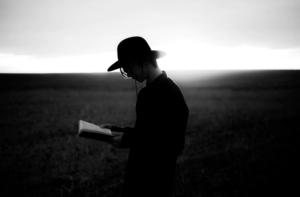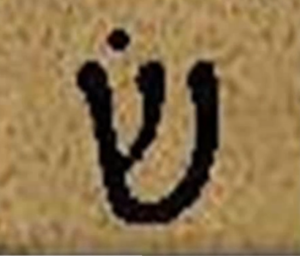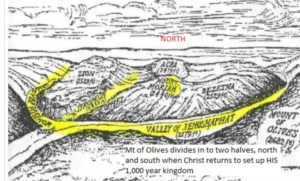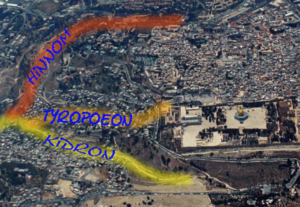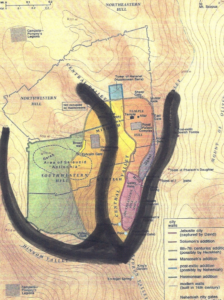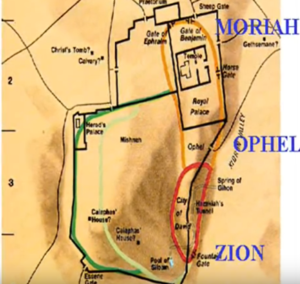
Sometimes we hear a comment and it jolts us, our head turns, and we ask, “did they really say that?” There was such an incident that was recorded at a notable wedding in the Old Testament. But was there another hidden meaning?
The Book of Ruth is a story of redemption and the climax occurs when Boaz as kinsmen redeemer redeems the land to Naomi and takes Ruth as his Gentile bride. During their wedding vows a strange toast is offered to them:
“May your house be like the house of Perez, whom Tamar bore to Judah, because of the offspring which the Lord will give you from this young woman.” (Ruth 4:12)
This is a bizarre toast at first glance because it references the sordid events of Genesis 38. If you recall, Tamar had married Judah’s firstborn son who died with no children. Under Mosaic law, Judah was expected to provide one of his other sons to provide Tamar with children. But he did not follow through and Tamar ultimately disguises herself as a prostitute and became pregnant by Judah himself. She gives birth to two illegitimate children, the twins Perez and Zerah. This is known as “Judah’s sin” and the Torah specifies (Deuteronomy 23:2) that the bastard child is to be cast out of the congregation for ten generations.
But, instead of a mocking insult, Ruth 4:12 is a prophecy that the tenth generation from Perez was none other than David. And to emphasize this, the book closes with David’s genealogy:
“Now this is the genealogy of Perez: Perez begot Hezron; Hezron begot Ram, and Ram begot Amminadab; Amminadab begot Nahshon, and Nahshon begot Salmon; Salmon begot Boaz, and Boaz begot Obed; Obed begot Jesse, and Jesse begot David.” (Ruth 4:18-22)
Thus, Boaz was the 7th generation from Perez in Judah’s lineage, or David’s great grandfather. But there is more to this story of Ruth and Boaz that has prophetic implications.
Biblical typology is perhaps the least understood but most important concept in the hermeneutics of biblical prophecy. It is a method of biblical interpretation whereby an element found in the Old Testament is seen to prefigure one found in the New Testament. The initial one is called the type and the fulfillment is designated the antitype. Either type or antitype may be a person, thing, or event, but often the type is messianic and frequently related to the idea of salvation. When one says Joseph is a “type” of Christ or the Passover lamb symbolizes Jesus as the eventual Lamb of God, these are examples of typology.
With only four chapters, the book of Ruth is a beautiful love story. When Orpah went back to her people, Ruth refused to leave her mother-in-law who was from the tribe of Judah. Ruth was a Moabitess who chose to stay with Naomi not only because she loved her but also she made a choice to serve Jehovah, the One True God! She told Naomi, “But Ruth said, “Do not urge me to leave you or turn back from following you; for where you go, I will go, and where you lodge, I will lodge. Your people shall be my people, and your God, my God.” (Ruth 1:16-17)
As a “type” Ruth represents the Gentiles who have become Christians and are devoted to Jehovah. She became a part of the family she married into, when she married Boaz, her Hebrew husband. In this regard, Boaz became her “kinsmen redeemer.”
The role of kinsman-redeemer is found in Leviticus 25 and Numbers 27:8-11, in the case of an Israelite man’s death in which he fails to leave behind a son, the brother of the deceased man is commanded to take his widow as wife and both redeem the land and provide a son to carry on the deceased father’s name.
This event occurs at the midsummer harvest at the threshing floor of Boaz where the winnowing of wheat was conducted. With use of a prevailing wind the grain would be tossed into the air and the grain would fall below while the chaff, being lighter, would be carried further downwind resulting in two piles. It was a time of festivities and having “met payroll” it was customary after celebrations for owners to sleep near their wheat to prevent theft.
It is here that Ruth approaches Boaz in the middle of the night while he is sleeping and requests him to spread his skirt over her as he is a near kinsman. This is not the kind of proposition many people might assume it to be.
“It happened in the middle of the night that the man was startled and bent forward; and behold, a woman was lying at his feet. He said, “Who are you?” And she answered, “I am Ruth your maid. So spread your covering over your maid, for you are a close relative.” (Ruth 3:8-9)
The shul (skirt), or hem, was the emblem of rank or authority in Israel, much like the stripes on the sleeve of a naval officer or airline pilot in our culture. In the middle of the night with no one else around, Ruth was asking Boaz to put the authority of his house over her. She is invoking her right under the laws of Israel for him to take her to wife. Boaz was delighted to accommodate her and communicated his intentions to take her as his wife. The next day in the city gate he formalized his redemption of Naomi and the taking of Ruth as his bride.
As we examine the role of Boaz as the goel, or kinsman-redeemer, we can easily see how he, in some ways, pre-figures our own kinsman-redeemer, Jesus Christ. Through his act of redemption, Boaz returns Naomi (Israel) to her land, and also takes Ruth (a Gentile) as his bride. This suggests a parallel with the Church as the Gentile bride of Christ. That Boaz takes Ruth as his bride “in the middle of the night” symbolizes the Rapture of the Church reminding us that Christ returns for His bride “like a thief in the night.” (1st Thessalonians 5:2)
Not only does he descend from the tribe of Judah, but Boaz came out of Bethlehem to bless his people and was the great-grandfather of David, the one to whom the promise of Messiah was given (2nd Samuel 7). More interesting is his father also took a Gentile bride. His father Salmon took Rahab as his wife after helping rescue her from the tower of Jericho. As a result, both Rahab and Ruth are found in the genealogy of our Lord Jesus Christ.
It is also remarkable that to this day the book of Ruth is always read by Jews on the day of Pentecost or Shavuot in Hebrew. Why? For it is recorded in their rabbinical writings that the redemption of Ruth by Boaz as her kinsmen redeemer occurred on the 6th of Sivan, or Pentecost. In addition, not only was the Church born on Pentecost Sunday, but Jews also celebrate the giving of the Law to Moses on Mount Sinai on this date as well.
“It is no coincidence that, on the same day of Pentecost in which God appeared to Moses in the wilderness of Sinai and revealed to man a new relationship based upon His sacred Law, He again revealed to man a new relationship based on the Holy Spirit. The mystical union of God and Israel that occurred on the Feast of Pentecost at the foot of Mount Sinai is exactly mirrored in the union of God’s Holy Spirit with Christ’s Bride, the Church, on Pentecost, fifty days after Christ rose from the dead.” -Grant Jeffrey
In all these ways Boaz is a type of Christ. Christ is the Lion of the tribe of Judah, who comes out of Bethlehem to bless his people. He is the Son of David, the redeemer of God’s elect. He sends his laborers into his fields to work. He treats his own people well. He receives and welcomes Gentiles. He pays our debt, and therefore gains the right to make us his bride.
“For the Lord himself shall descend from heaven with a shout, with the voice of the archangel, and with the trump of God: and the dead in Christ shall rise first: Then we which are alive and remain shall be caught up together with them in the clouds, to meet the Lord in the air: and so shall we ever be with the Lord. Wherefore comfort one another with these words.” (1st Thessalonians 4:16-18)
Sources: Grant Jeffrey, Dr. Chuck Missler, Nick Batzig

